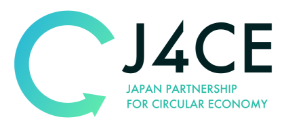Produce Energy and Resources from Sludge Circular Sludge Treatment System
[Company / organization] Veolia Japan GK
Implementation
2017
Business Model
・Electricity is produced using digestion gas generated from wastewater sludge treatment and is supplied to the local community as renewable energy.This initiative contributes to both the environment and economy as it effectively utilizes wastes and provides the facility with source of revenue by selling electricity.
・Sewage, wastewater sludge and raw garbage are dewatered, dried, fermented and turned into compost using solar energy, i.e. a type of natural energy, instead of fossil fuels.Compost is used, for example, by local farmers which contributes to achieving circular society locally.
Objectives and Case Examples
<Objectives>
Digestion gas power generation contributes to decarbonization of municipalities and companies.Also, compost generated from sludge and raw garbage is utilized for local vegetable and fruit farming.“Local production for local consumption” business model could be achieved by selling the fruits and vegetables in the same area, and local employment would be generated.As this scheme could be a model case for local circular economy, we intend to actively expand its scale.Some of our initiatives have reportedly been introduced in educational materials used by local elementary schools, which shows that the initiatives are also meaningful from environmental education perspective.
<Case Examples>
・Digestion Gas Power Generation Project at Nishiura Wastewater Treatment Plant in Funabashi City
・Toyotomi Clean Center in Chuo City, Yamanashi Prefecture, and others
Links introducing the above initiatives
Digestion Gas Power Generation Project at Nishiura Wastewater Treatment Plant in Funabashi City
https://www.nishihara.co.jp/case/case01.html
Toyotomi Clean Center in Chuo City, Yamanashi Prefecture
- Recycle
- Renewable
- End-of-use
- Others
- Local government
- Currently under implementation (already in business)
- Case/initiative by individual company


